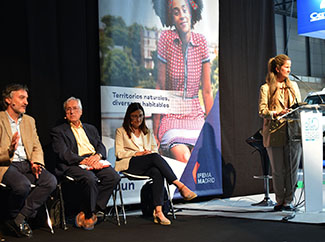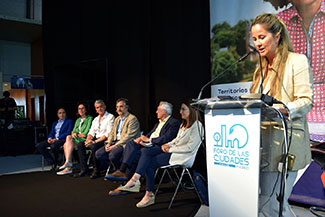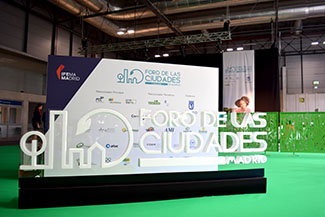consent_cookie
Duración: 1 year
Stores the user's cookie consent state
15-06-2022
Textiles were the main protagonist yesterday at the second dialogue table of the session 'Are we making progress in the implementation of the Circular Economy?', which took place yesterday afternoon at IFEMA Madrid, within the framework of the Cities Forum.
The participants in this dialogue were the following:
Belén Vázquez acted as moderator. She is expert in circular economy and coordinator of the Circular Economy Working Group of the Madrid Cities Forum.
During his speech, José David Moreno highlighted that 'environmental and social objectives are compatible and complementary for textile waste managers such as Humana. The social brings enormous added value to the protection of the environment. Moreno was somewhat pessimistic regarding progress in the circular economy in Spain: 'The economic model remains the same, based on using and throwing away'. However, the rest of the members of the table were more optimistic, highlighting that progress is being made in general, although not everything that should be done.
Currently, the circularity rate of the Spanish economy is only 8.2%. In the Netherlands it reaches 30%. The amount of textile waste that reaches the landfill is double the European average. It seems clear, therefore, that we have to improve a lot if we want to talk about advances in circular economy applied to fashion and textiles.
Cans, an example of circularity
Cans, aluminum containers, are an example of a monomaterial element that is endlessly recycled at 80%, as Juan Ramón Meléndez commented. ‘85% of the aluminum produced throughout history remains in use thanks to its recycling. With 13 grams of material we manage to transport 330 cc of soft drink, for example, which represents a very good ratio.
During the dialogue, the emphasis was placed on the fact that more than circular economy, it is necessary to talk about circular and spiral economy, taking into account the principles of thermodynamics. In addition, regarding the voluntary nature of recycling prevailing in Spain, in other countries you are penalized if you place waste in the wrong place.


